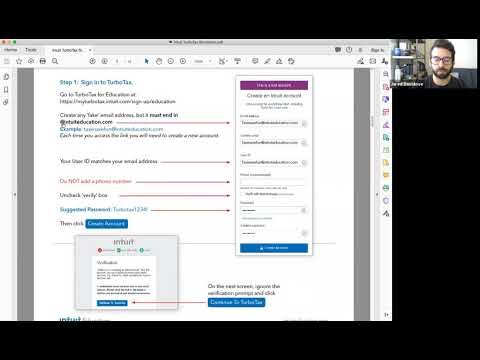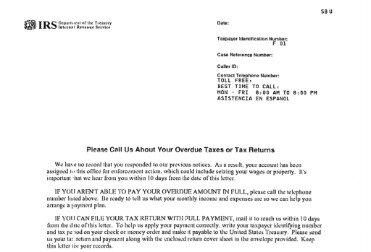Contents:


Gross profit margin is the percentage of your business’s revenue that exceeds production costs. In other words, it’s the percentage of the selling price left over to pay for overhead expenses. For example, a company has revenue of $500,000; cost of goods sold is $200,000, leaving a gross profit of $300,000.
Sainsbury’s turn to find itself in ‘greedflation’ spotlight – Proactive Investors UK
Sainsbury’s turn to find itself in ‘greedflation’ spotlight.
Posted: Fri, 21 Apr 2023 14:56:00 GMT [source]
When I first started my small business, there was no major need for looking at metrics and using that data for decision-making. However, now that my business is starting to grow, I think it is more important for me to assess and measure the different aspects of my business to make sure that it grows further and I generate revenue. The gross profit margin percentage is one of the key aspects that I need help with.
Read our editorial process to cash disbursement journal more about how we fact-check and keep our content accurate, reliable, and trustworthy. Erika Rasure is globally-recognized as a leading consumer economics subject matter expert, researcher, and educator. She is a financial therapist and transformational coach, with a special interest in helping women learn how to invest. 🚀 We just launched Causal for Startups, a new product for early-stage companies! Multiply by 100 at the end of the formula to create a percentage. As a result, you will make poor decisions based on inaccurate data.
Connect With a Financial Advisor
Since these two metrics are vital in business, most managers are aware of them and can convert from one metric to the other. Gross margin ratios tell a company how much revenue it has left to pay for regular expenses after paying to produce the goods and services they sell. On the other hand, profit margin ratios tell a company how much revenue is left as profit after all COGS and expenses are paid. Gross margin ratio helps companies determine how profitable their inventory and services are and allows them to calculate how much of the revenue is left for paying operating expenses.
As one would reasonably expect, higher gross margins are usually viewed in a positive light, as the potential for higher operating margins and net profit margins increases. An accurate assessment of the gross profit metric depends, however, on understanding the industry dynamics and the company’s current business model. You can calculate different types of profit margins, including net profit, gross profit, and operating profit. On the other hand, net profit looks at profits after everything else has also been taken out, like taxes, marketing expenses, rent, and debts. Operating profit is how much money the company has left over after covering operating expenses , but before paying taxes and interest.
What is Gross Margin?
The significant fluctuation between gross profit margin and net profit margin shown within many industries demonstrates how gross profit margin only comprises part of the picture. To holistically evaluate your business’ financial health and competitiveness, you will have to assess additional metrics in conjunction with gross profit margin. Good gross profit margin lies in how much variance occurs across different industries. While the overall average sits above 30%, there is a wide disparity in gross profit margins between regional banks (99.75%) and automotive businesses (9.04%), for example.
Companies with high gross margin ratios stand a better chance of having higher profit margins overall. When the cost of goods sold is kept low in comparison to the amount of revenue those products generate, a higher percentage of each dollar of revenue can pay for general expenses and overheads. The managers of a business should maintain a close watch over the gross margin ratio, since even a small decline can signal a drop in the overall profits of the business. A further concern is that the costs that go into the calculation of net price can include some fixed costs, such as factory overhead. When this is the case, the gross profit margin will be quite small (or non-existent) when sales are low, since the fixed costs must be covered.

So, she opens her accounting software and starts making some calculations. Now, we could calculate the gross margin by reducing COGS from net sales. Closing InventoryClosing stock or inventory is the amount that a company still has on its hand at the end of a financial period. And understanding your retention rates is crucial.Retaincan dramatically improve your retention rates, as well as win back lost customers.
Why is gross margin ratio important?
Before you start to calculate gross margin, know that margins vary significantly from industry to industry. Grocery stores have very low margins, whileSaaS subscriptionservices have much higher margins. That’s why to calculate gross margin, analysts often use the percentage formula to compare margins within and across industries. For our example modeling exercise, we’ll be calculating and comparing the gross profit margin of three companies, with each having different revenue and COGS assumptions.

Why do some businesses manufacture products when service-based businesses enjoy more profits? Well, if the business is large enough, it can benefit from economies of scale, a phenomenon where the average cost of goods sold decreases with an increase in output. He provides a service for cutting customers’ lawns, trimming bushes and trees, and clearing lawn litter. Let’s use an example to calculate the gross profit and the gross margin. To arrive at the gross margin percentage, we need to divide the gross margin by the net sales. The calculation of gross margin can be calculated both un absolute terms or in percentage format.
Accounting software
Though it is a popular and widely used tool for evaluating the operational performance of the business, it is not a complete measure for judging the company’s overall functioning. The net profit ratio would be more useful because it considers all other expenses, which we shall learn about in another article. New and startup business owners need to monitor their company’s finances closely. Looking at your gross profit margin monthly or quarterly and keeping track of cash and inventory will help optimize your company’s performance.

Our writing and editorial staff are a team of experts holding advanced financial designations and have written for most major financial media publications. Our work has been directly cited by organizations including Entrepreneur, Business Insider, Investopedia, Forbes, CNBC, and many others. In the agriculture industry, particularly the European Union, Standard Gross Margin is used to assess farm profitability. Our work has been directly cited by organizations including MarketWatch, Bloomberg, Axios, TechCrunch, Forbes, NerdWallet, GreenBiz, Reuters, and many others. More detailed definitions can be found in accounting textbooks or from an accounting professional.
It is essential to increase the gross margin ratio, since it is a key driver of the net profits generated by a business. For example, if we want to accumulate a profit of $500 and earn a contribution of $5 per unit, we must sell at least 100 units to meet our target. If there is not enough market for 100 units, we either need to decrease the production cost or increase the sales price. If the gross margin ratio falls, the unproductive department could be easily tracked down and worked upon.
If markup is 30%, the percentage of daily sales that are profit will not be the same percentage. This formula can be calculated by dividing the gross profit by the net sales. Unit margin is expressed in monetary terms while gross margin ratio is expressed in percentage. It is a ratio that expresses the percentage of each dollar made that the company retains as profit. This means that if a company has a gross margin of 15%, it means that for each dollar made in sales, 15% of the dollar is the profit made by the company.
One could take multiple measures to increase the productivity of that particular department. On the other hand, if the revenue side has caused a decline in the ratio, they should consider problems in the sales and distribution department. However, it excludes all the indirect expenses incurred by the company. As companies create their products or services, they incur costs.
In our coffee shop example above, the gross profit was $80,000 from revenue of $200,000. The purpose of margins is “to determine the value of incremental sales, and to guide pricing and promotion decision.” The cost of goods sold is the direct labor and material costs for creating products. BeProfit is the most accurate profit calculator & data analytics dashboard for eCommerce businesses. Start making data-driven decisions to optimize your store’s profitability with BeProfit.
You can also use it to determine if a company is managing operating expenses effectively. Use the formula above to include gross profit math so you can see both. It’s a variable cost because you would not have that, but it’s not direct. Sales is a cost to generate a customer who will then generate revenue from somebody else. Variable costs increase and decrease depending on the volume of goods or services produced.
- Although many people use the terms interchangeably, gross profit and gross margin are not the same.
- She might produce a small batch of the new clothing and see how those items sell.
- For example, if the ratio is calculated to be 20%, that means for every dollar of revenue generated, $0.20 is retained while $0.80 is attributed to the cost of goods sold.
- Finally, gross profit margin does not indicate how much of a company’s profit is generated from its core business.
- One could take multiple measures to increase the productivity of that particular department.
- When this is the case, the gross profit margin will be quite small (or non-existent) when sales are low, since the fixed costs must be covered.
Gross profit margin (sometimes referred to as “gross margin” or “gross margin ratio”) is one of the primary metrics used to evaluate a business’ health and competitiveness within its industry. Measured as a percentage, gross profit margin will tell you how much revenue your products and services generate per dollar after subtracting your cost of goods sold. Represented as amounts, ratios or percentages reveal key information regarding the structure of sales, pricing and commission calculating processes. The gross profit margin ratio, also known as gross margin, is the ratio of gross margin expressed as a percentage of sales.
Gross Profit Ratio
Then run the numbers again to determine if the new clothing lines are profitable and can be permanent additions to her company. Get instant access to video lessons taught by experienced investment bankers. Learn financial statement modeling, DCF, M&A, LBO, Comps and Excel shortcuts. The fact that net income is “levered” (i.e. post-debt) and flows solely to equity holders is one of the primary drawbacks to the net margin metric.
- For net profit, net profit margin and profit percentage, see the Profit Margin Calculator.
- The gross margin shows how efficiently a company is making a profit from its raw materials.
- It is calculated by dividing the company’s gross profit by its net sales.
- Why do some businesses manufacture products when service-based businesses enjoy more profits?
- This measure reflects productivity in terms of how a company uses its raw materials, labor, and other factors of production.
A company that experiences a large increase in sales may see its gross profit margin decline, even if it is still profitable. To determine the gross profit margin, we need to divide the gross profit by the total revenue for the year and then multiply by 100. For example, the same T-shirt company from before also pays for warehouse space, advertisements, and small business loan payments. So, the net profit would be how much is left over after all of that is covered.
This is the pure profit from the sale of inventory that can go to paying operating expenses. None of the three metrics provide enough information on their own to declare your business a success or concern. A company could post incredible gross profit margins but see most of those percentage points whittled away by remaining operational expenses.
Profit margins, in a way, help determine the supply for a market economy. If a product or service doesn’t create a profit, companies will not supply it. The profit margin is a ratio of a company’s profit divided by its revenue. The profit margin ratio compares profit to sales and tells you how well the company is handling its finances overall.
5 expensive energy mistakes grocers are making – Grocery Dive
5 expensive energy mistakes grocers are making.
Posted: Wed, 19 Apr 2023 15:26:23 GMT [source]
This means Tina’s business is doing a little below average, with an 18.75% gross profit margin. She might consider raising her prices or looking for ways to reduce direct costs without cutting quality. GPMP is a well established financial metric, but it doesn’t tell you everything. Although it’s often used as a metric showing overall company efficiency, a decrease in GPMP may have to do with a pricing issue alone. Also, GPMP doesn’t necessarily establish where the problem in low margins originates. In other instances, a company may have an excellent GPMP but insufficient sales volume to adequately cover the expenses not included in gross profits.
Step 3 → Lastly, we’ll divide the gross profit of each company by the amount of revenue in the corresponding period to quantify the gross profit margin. The Berry ratio measures a company’s gross profit to operating expenses. Used in transfer pricing methods, this ratio is a financial indicator.
The ratio GP/NS is multiplied by 100% to convert to a percentage. A company’s real profits can only be calculated once all costs are subtracted. These may include costs such as advertising, interest, taxes, labor, material, and overhead costs. Apart from excel, there are profit trackers which track sale price and cost and can calculate the profit and profit margin automatically.
